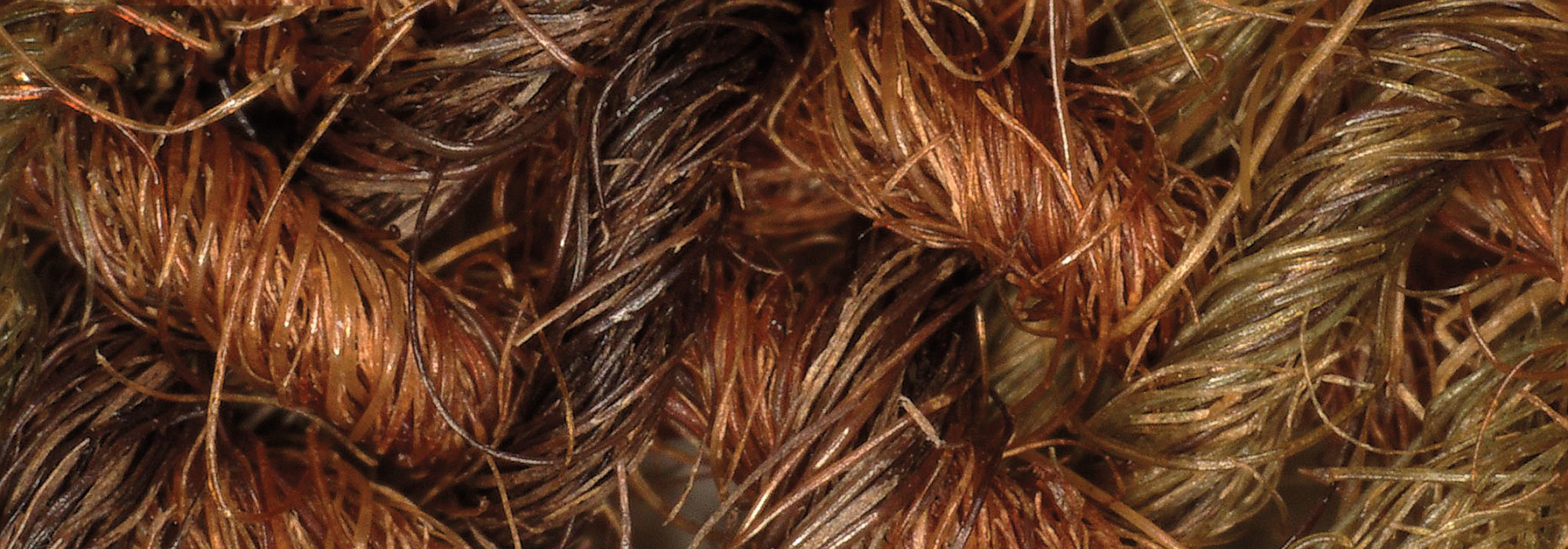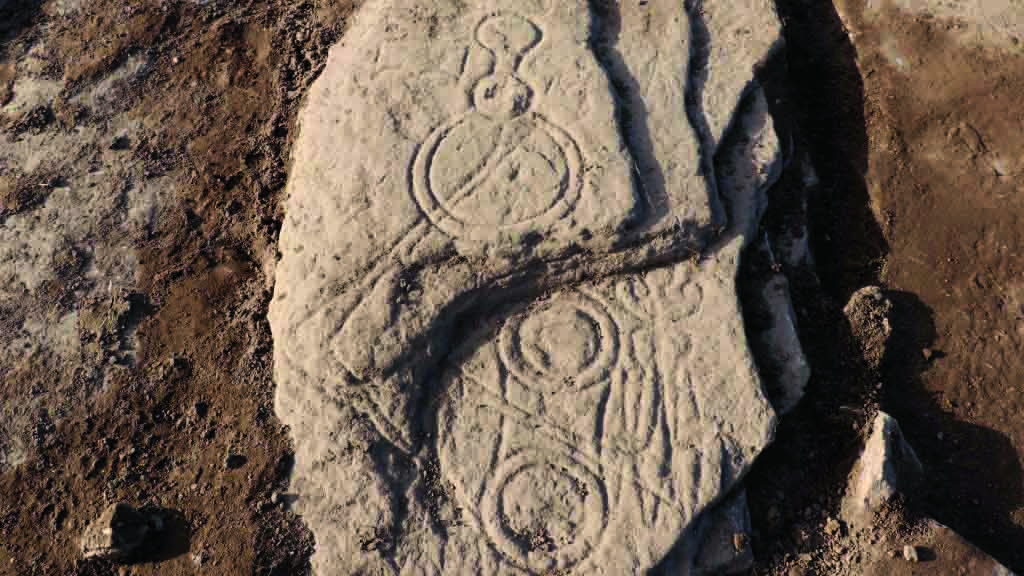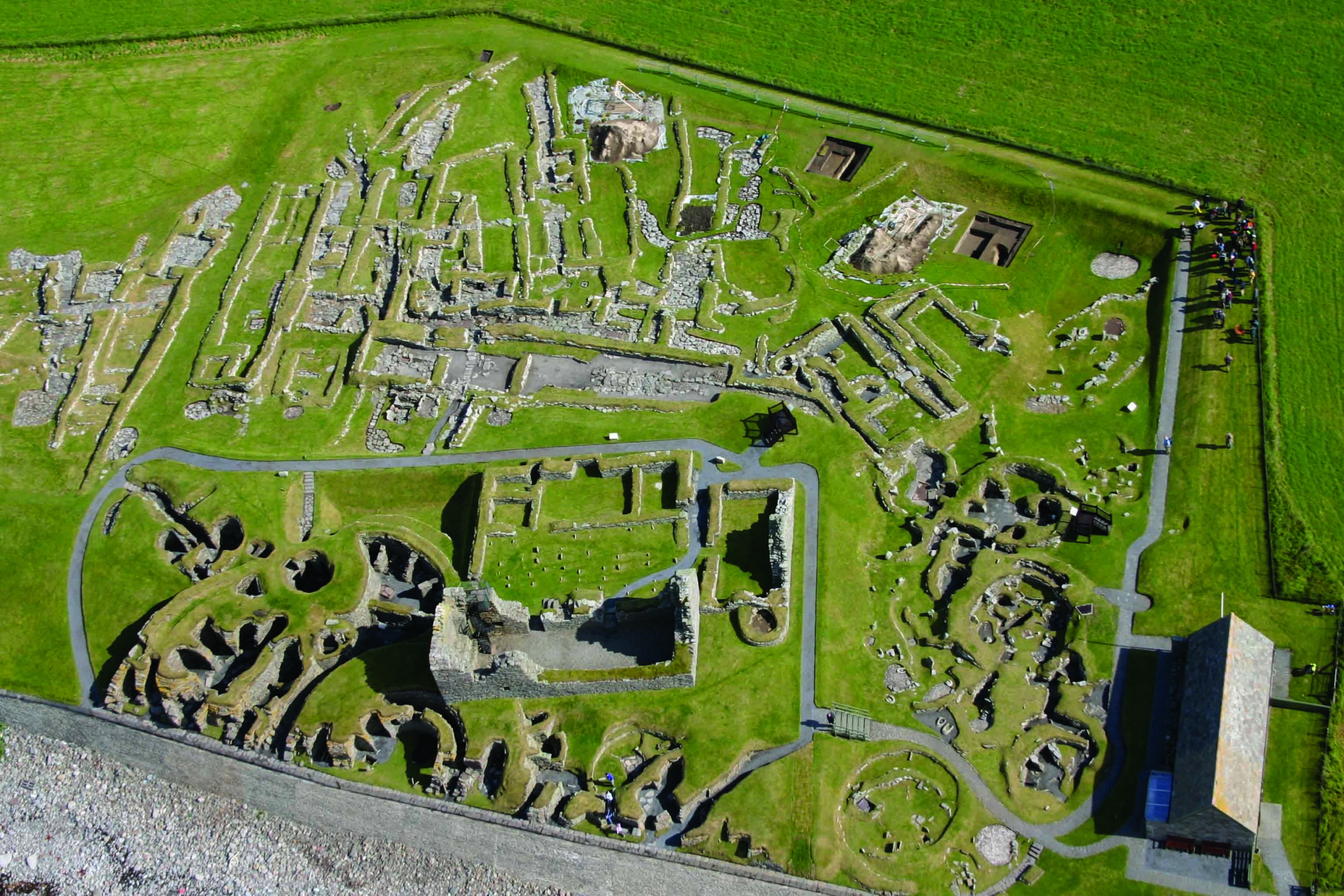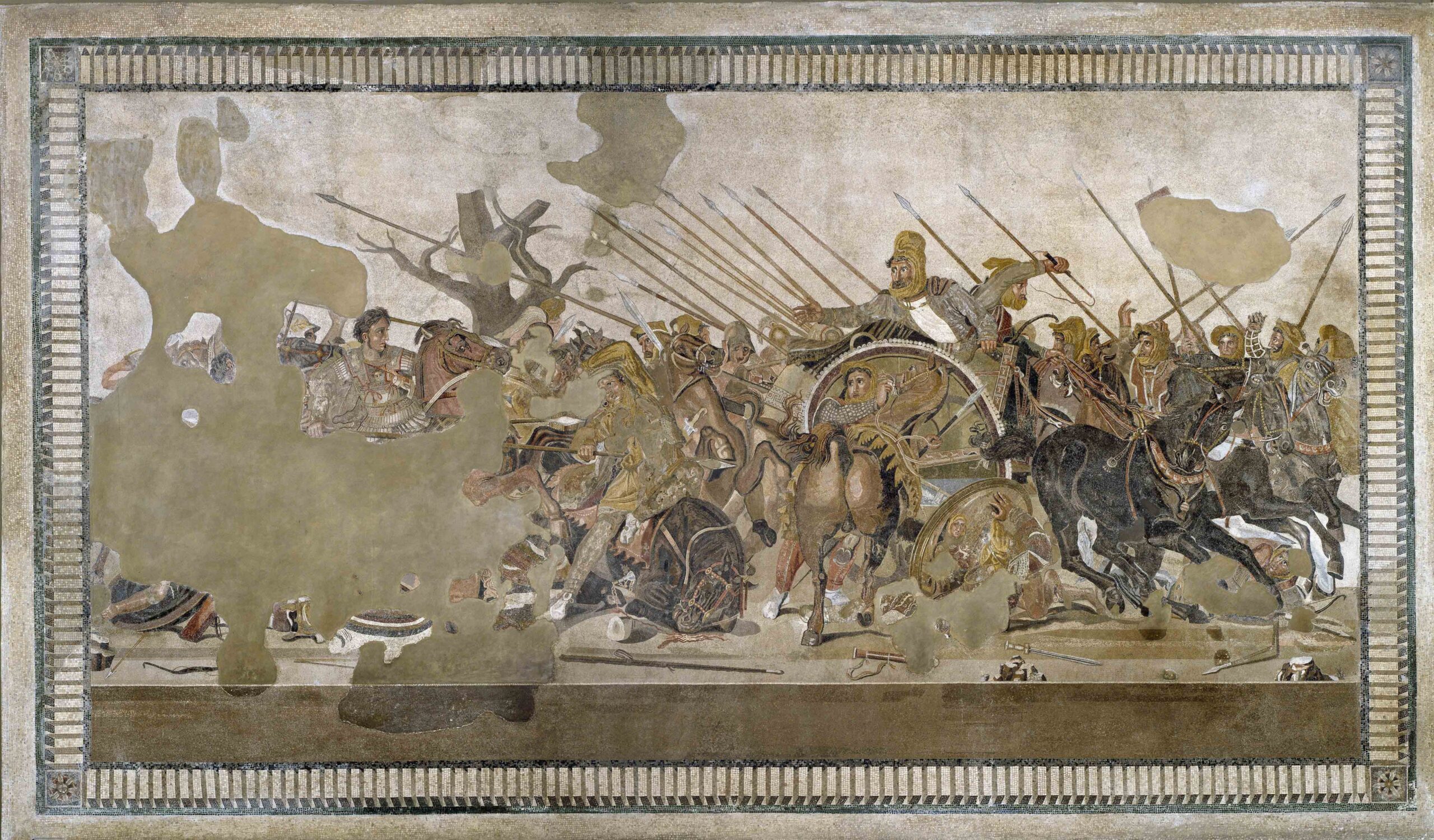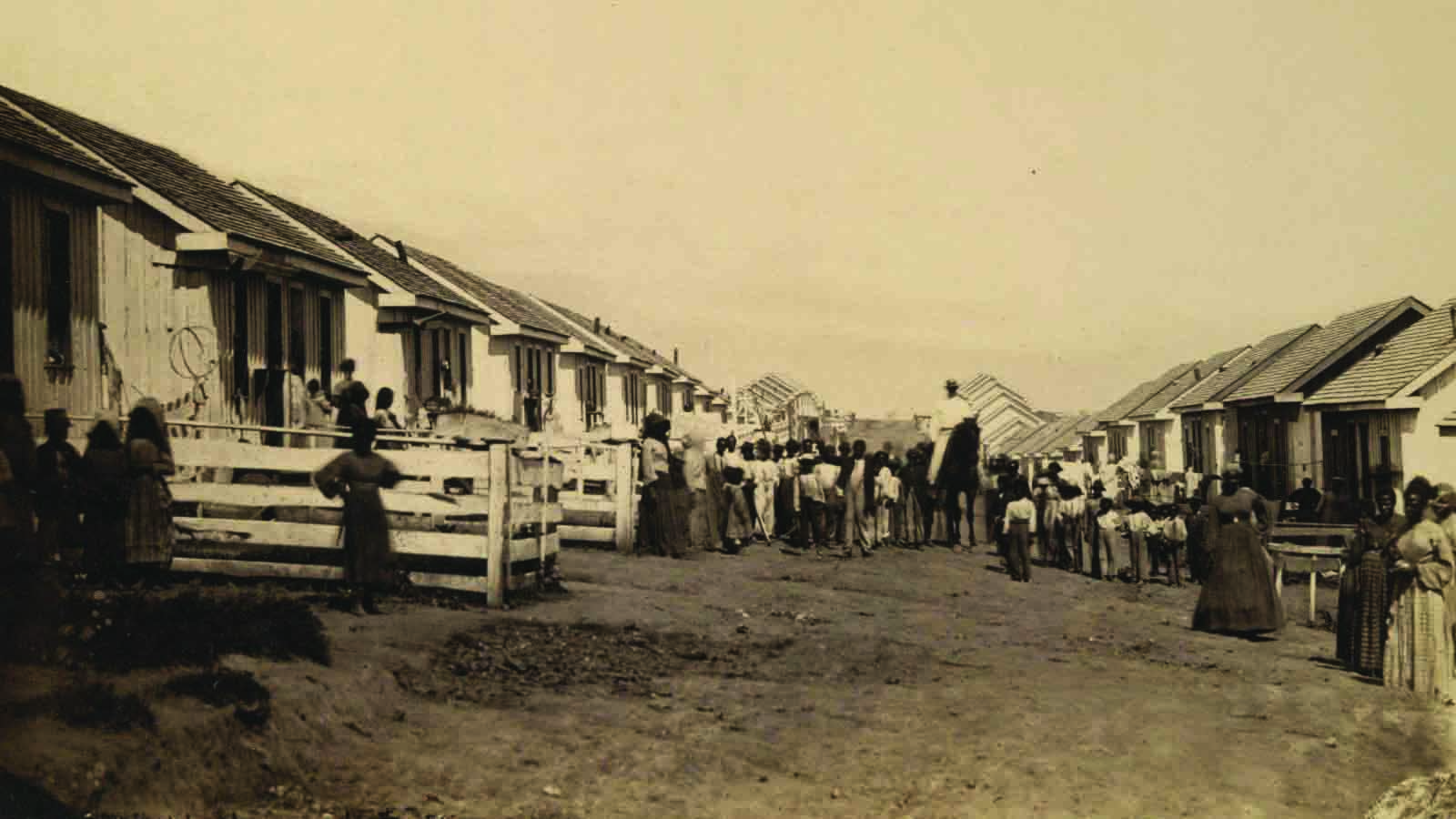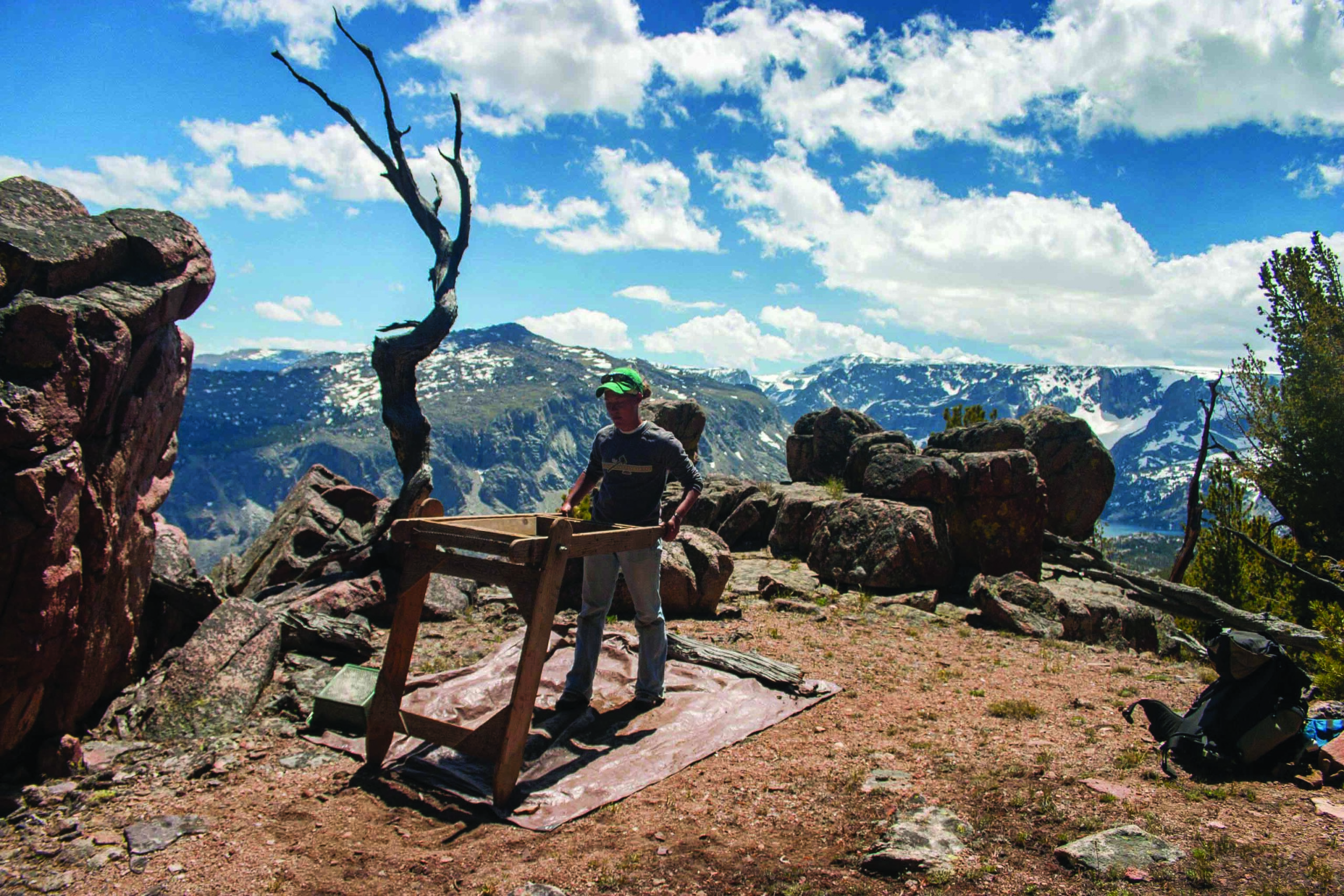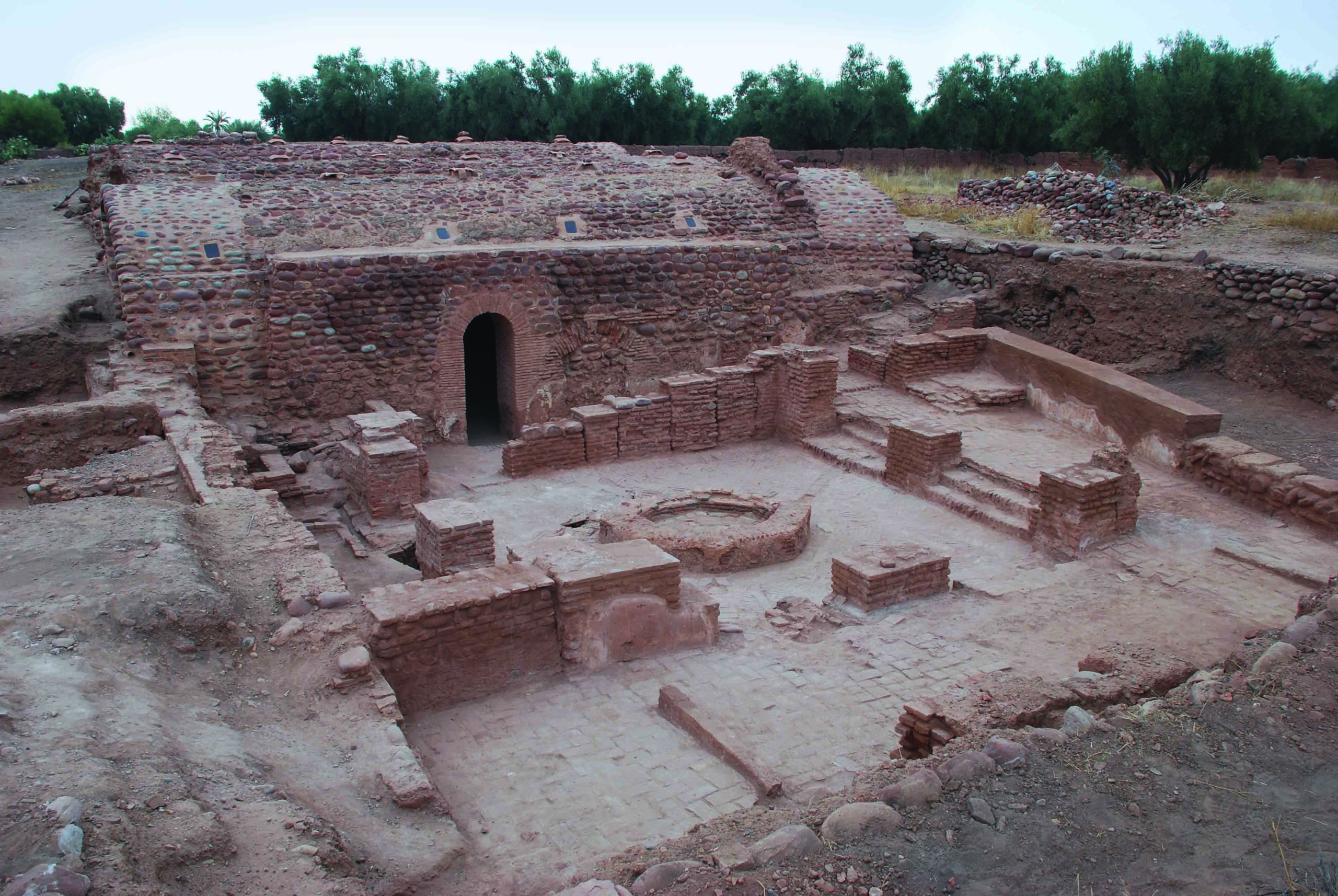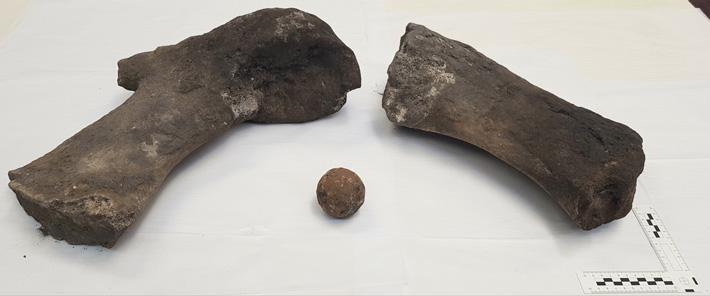
EDINBURGH, SCOTLAND—Excavation along a planned tram route in Edinburgh’s port area of Leith has uncovered two bones from the fin of a large, male sperm whale, according to a report in The Scotsman. The bones will be radiocarbon dated, but archaeologists think the whale may have lived as long as 800 years ago. “Leith was really important for its whaling industry from the early seventeenth century to the twentieth century, but it would have been happening in the North Sea and North Atlantic as far back as medieval times,” said Edinburgh council archaeologist John Lawson. The heavy bones may have been kept as a memento or trophy, he explained, or may have come from a whale that beached on the shore. The excavation has also uncovered a stone seawall built as a fortification in the sixteenth or seventeenth century, and a small iron cannonball thought to date to the seventeenth century, when Leith was ruled by Oliver Cromwell’s forces. To read about burials of whales and other marine animals discovered under temple platforms on Peru's northern coast, go to "Remembering the Shark Hunters."


